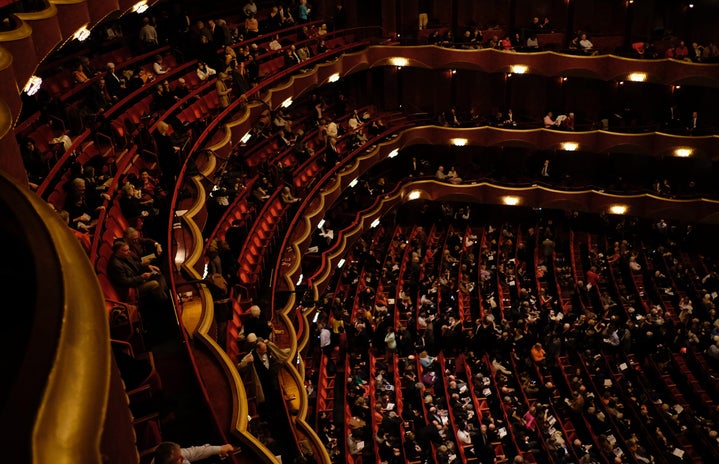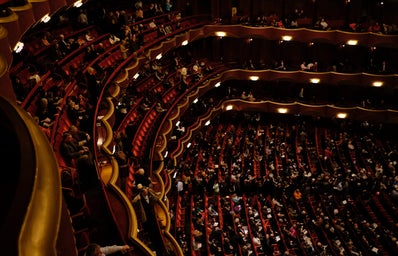As this is an introductory course to all things classical music, we will start out with only five pieces of recommendation — featuring well-known composers, not to worry — to get you into the ~classical~ mood. Of course, I’d like to say there’s a science behind this, but I like to be frank with my readers, so I won’t lie to you now: this is simply a list of my five favorite classical pieces. That is how I know, though, that if you listen to them, you too will find yourself a classical listener.
Starting off strong, we have Wolfgang Amadeus Mozart’s “Requiem in D Minor.” This is a longer piece, with different sections throughout that can be split up and performed on their own, and also features lyrical voice. However, I like to stress the importance of listening to the piece in its entirety. It is dark at times, but extremely moving and honestly, motivating — that is if you let yourself truly embrace the music. At the very least, listen to the first 15 minutes’ worth of movements — begin with Introitus and end with Lacrimosa.
For many years, Mozart’s Requiem was my all-time favorite classic piece. While Mozart is still my favorite composer, Ludwig van Beethoven’s “Symphony No. 7 in A Major, Op. 92: II. Allegretto” (the second movement of Beethoven’s Seventh Symphony) now holds my heart — or, ears, perhaps. I honestly haven’t even listened to the rest of this symphony because I am too obsessed with the allegretto. The second movement is so good that I can listen to it literally in any scenario and still feel good absolutely mesmerized by the end; I can listen to it while doing homework — and inevitably getting distracted and not resuming work until the piece has ended — while I’m at the gym, while I’m in the bathtub, even when I’m just out on a COVID walk! I wouldn’t say it is like Mozart’s Requiem at all, really, but they definitely share the theme of darkness. Although, Beethoven’s seventh symphony allegretto is more chilling.
Next, I am wont to praise Mozart’s “Queen of the Night Aria” featured in his opera score of Die Zauberflöte, or, The Magic Flute. Obviously, I have double-dropped a name here. But while Mozart is clearly the composer to be awarded credit for the magnificence of this piece, I find that coloratura soprano opera star Diana Damrau’s performance makes this aria unlike any other — specifically during her performance at the Royal Opera House in London. As an opera singer myself, this is the piece that inspired me to finally give into my mother’s persistent attempts to get me to train my voice operatically; one note from Diana Damrau, and anyone will aspire to produce a sound even half as good.
Unlike pretty much all of the other pieces featured on this list, Vincenzo Bellini’s “Casta Diva” from the opera Norma is an aria that is much lighter on the ears; there is no air of impending gloom or domination or anything of the like. How could it possibly be a great classical piece, then, you ask? A good question. Similar to Mozart’s relationship with Diana Damrau, Bellini’s aria is really brought to life by world famous soprano Renée Fleming (who I was fortunate enough to participate in an opera workshop with during my days at the New England Conservatory in Boston. Wonderful experience, obviously).
The final piece I would be remiss not to recommend is Giacomo Puccini’s “O Mio Babbino Caro.” This is one of my favorite arias to sing — and the first one I ever sang where I truly felt connected to and impassioned by the music — so it is slightly possible that I hold some sort of bias. However. I once again guarantee that you will not hear this aria (sung best, in my opinion by me. Just kidding, Renée Fleming takes the cake yet again) and not love it. Honestly, it’s probable that you will have heard this before; it’s just one of those pieces that everyone knows, I think (honestly, most of these pieces are the ones that everyone just knows, but it doesn’t make them any less special! Plus, you have to listen to them to appreciate them in full). Nevertheless, if you are sitting down to listen to it truly for the first time, I beg of you, listen to Renée Fleming sing it. Just do it.
Okay, you caught me. I obviously cannot make a list of my favorite classical pieces which numbers only five. Nor can I truly form one that numbers only six, but we all have to make sacrifices. And yes, you caught me again — I am double-dropping another name. But it’s Beethoven, so can you blame me? The first movement of Beethoven’s 14th sonate, “Moonlight,” is breathtaking. Chilling. Haunting. Utterly fabulous. And while it is my favorite piece to play on the piano and the first one I ever truly mastered, I — again — don’t believe I’m biased, here!
So there you have it, my newly minted classical lovers. Let your ears run wild through Spotify, YouTube, Apple Music, or whatever platform suits you. Just pick one of these, light a candle, lie down, and enjoy.


